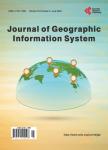Spatial Analysis Approach in Revealing the Global Sinks of Atmosphere Carbon Dioxide through “Leave One Out” Method
Spatial Analysis Approach in Revealing the Global Sinks of Atmosphere Carbon Dioxide through “Leave One Out” Method作者机构:Department of Environment and Energy Science and Research Branch Islamic Azad University Tehran Iran Department of GIS/RS Science and Research Branch Islamic Azad University Tehran Iran Department of Science/Florida Southern College Lakeland Florida USA Faculty of Civil and Passive Defense Malek Ashtar University of Technology Tehran Iran Surveying and Geomatics Group Engineering Faculty Tehran University Tehran Iran Surveying Department National Cartographic Center Tehran Iran
出 版 物:《Journal of Geographic Information System》 (地理信息系统(英文))
年 卷 期:2014年第6卷第4期
页 面:286-297页
学科分类:1002[医学-临床医学] 100214[医学-肿瘤学] 10[医学]
主 题:Carbon Dioxide Sink Spatial Autocorrelation Interpolation Jackknife Negev Desert
摘 要:Global warming and climate change are the most important ecological issues of our time. The most well-known factor in this phenomenon is the redundancy of carbon dioxide in the atmosphere. Over the past 50 years the amount of residual CO2 in the atmosphere has risen from 40% to 45%. Reducing CO2 redundancy requires precise knowledge of the gas sources and sinks throughout the atmosphere. Despite having a leading role in residual gas levels of atmosphere, the diagnosis and types of changes of absorbing carbon dioxide are very much in doubt. Atmospheric measurements of CO2 concentrations are highly precise and provide a reliable measure of increase of CO2 in the atmosphere every year but they do not lead to the location of sources and sinks. Studies about understanding CO2 cycles began mainly around 1990 and most of these studies have been focused on non-spatial analysis. By ignoring the spatial effects, an important property such as closeness (adjacent) has been disregarded. The emission sources of gas are stronger than their sink sources i.e., whenever a sink is adjacent to a strong emission source, the measurements will show a massive existence of CO2 gas in that region although there exists a fine CO2?gas sink at below. Using the global measurements of CO2 and applying spatial analysis approach to “Leave One Out method, our studies reveal the most probable spots of CO2 sources and sinks and that Negev Desert in Middle East is a distinguished CO2 sink region.



